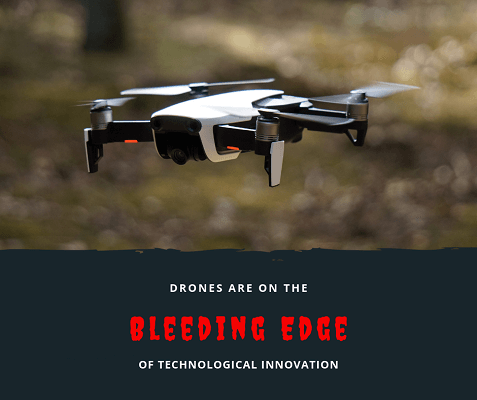
YouTube / iTunes / Spotify / Radio Public / Pocket Casts / Google Podcasts / Breaker / Overcast
Listen to ArtisanEnglish.jp posts & lesson intros here.
WotD: Bleeding edge
The term bleeding edge gives a graphic image of something that cuts and causes bleeding.
It’s just another, more visual, term for leading or cutting edge.
All three of these terms refer to the latest technological advances.
Each new generation is living on the bleeding edge of technology.
If we pause to think about it, humans have been living on the bleeding edge since the birth of the Industrial Revolution.
Each successive generation believes their technology is much better than the previous generation’s.
Of course, they’re right, but we live in an era of constant advancement.
I’ve talked about drones before in one of my posts.
There’s much talk about how drones will change the world as we know it.
The possibilities are endless, and future generations will realize the benefits.
If we look at them, drones are miniaturized versions of helicopters.
The technology is not so different.
It’s just that now we have a different way of utilizing the technology.
That’s what the term bleeding edge refers to incremental steps forward.
From time to time, however, our so-called bleeding-edge technology is not that at all.
Sometimes, it is merely recycled technology that many people have forgotten about.
Let’s take a look at electric cars.
Cars powered by electricity are all the rage now.
We’re told that they will save us from climate change and revolutionize how we travel.
Americans were driving electric cars back in the 1930s.
It’s not so bleeding edge if you know the history.
While on the subject, I might as well mention push-button starters in cars, too.
They’re excellent gimmicks but not new technology.
They were bleeding edge technology 100 years ago.
Flesch-Kincaid Readability Test
This post is understandable by someone with at least an 8th-grade education (age 13 – 14).
On the Flesch-Kincaid reading-ease test, this post scores 66.
The easier a passage is to read, the higher the score on a scale of 0 – 100.

